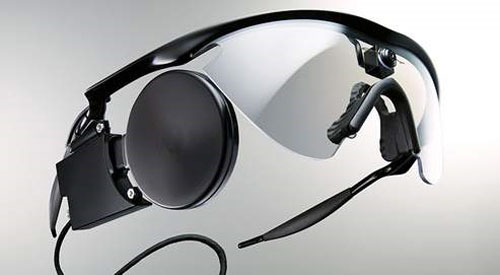Artificial retina: New hope for blind patients
For the first time in the world, a device capable of bringing light to blind people has been licensed for circulation throughout Europe.

The artificial retina will provide opportunities for blind patients.
With the name Argus II , this device has proven to be a good operation, a high level of safety and the ability to return some of the light to blind patients as a result of sagging. Perineal pigment caused.
The device has been tested by scientists at Second Sight Medical Products (California) with about 30 patients at many health centers in the US, Mexico and Europe.
In the process of testing Argus II at the French National Center for Ophthalmology (CNHO) at the Quinze-Vingts Institute (Paris), some patients who participated in the test could even read large scripts.
Currently, to be able to transplant this artificial retina, patients can go to hospitals at universities in Geneva (Switzerland), UK hospitals like Royal Eye (Manchester) or Moorfields Eye (London). ) or National Ophthalmology Center in France.
Currently, in Germany, the payment for equipment of this type has been licensed with an amount of over 85,000 euros (about 2.5 billion).
Argus II's operating method consists of 3 separate stages : collecting images with a micro camera installed on two glasses; handle those images with a small computer the size of a phone installed on the waist and the senses of these signals are transmitted to the retina via a chip attached above.
Argus II retina is wirelessly connected to a computer and is designed to be permanent in the body. After months of testing, blind patients saw images made up of signals sent by the camera to the retinal ganglion cells.
- Retina, the 'artificial eye' impresses the blind
- Retina Graphene and visible opportunity for the visually impaired
- Prospects for electronic retina transplant for the blind
- Developed the world's first artificial biological retina
- Artificial eyes
- Hope to restore eyesight
- Implants artificial skin from hair roots
- Prospective research
- Blind people can see in 10 years
- A method to cure color blindness has been found
- New step in treating blind patients
- The breakthrough in blindness
 'Barefoot engineer' invents a pipeless pump
'Barefoot engineer' invents a pipeless pump Process of handling dead pigs due to disease
Process of handling dead pigs due to disease Radiometer
Radiometer Warp Engine: Technology brings us closer to the speed of light
Warp Engine: Technology brings us closer to the speed of light Positive trial results of drug that 'melts' cancer tumors
Positive trial results of drug that 'melts' cancer tumors  Tips to reduce loss of appetite during breast cancer chemotherapy
Tips to reduce loss of appetite during breast cancer chemotherapy  WHO recommends not using plasma to treat COVID-19 patients
WHO recommends not using plasma to treat COVID-19 patients  Smart bandages help patients recover from a distance
Smart bandages help patients recover from a distance  The first trial with a drug to treat long-lasting Covid-19 sequelae
The first trial with a drug to treat long-lasting Covid-19 sequelae  Close-up of modern equipment and machinery inside the largest Covid-19 field hospital in Hanoi
Close-up of modern equipment and machinery inside the largest Covid-19 field hospital in Hanoi 